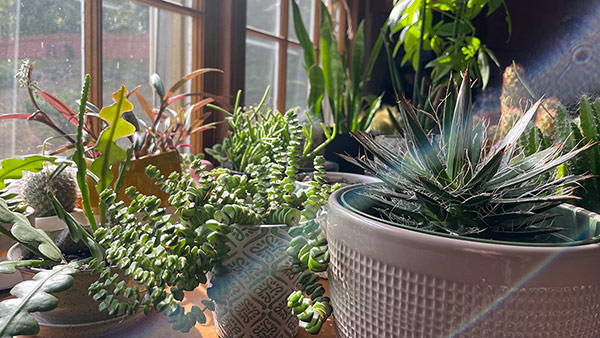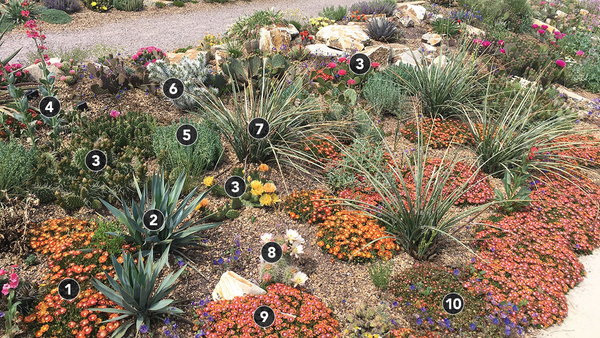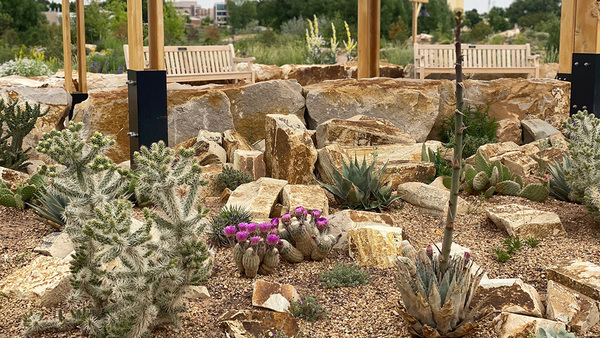
While these plants can take the cold, they may need special care to thrive in certain environments. Follow these guidelines to ensure that your hardy cacti and succulents last for years to come.
• Provide full sun
The plants in this article are cold hardy to at least Zone 5 and want full sun during the growing season. They are all heat tolerant except for ‘Greenii’ hens and chicks, which, like other hens and chicks, relishes some afternoon shade when the weather is both sunny and hot.

• Well-draining soil is crucial
Good drainage and dry conditions year-round are the keys to success in growing these plants. If you have a heavy-textured soil or even a rich loam, planting in raised beds or berms will help improve drainage and benefit your plants. These plants fall into two categories—cacti and noncactus succulents. The noncactus succulents are more tolerant of heavier soil types than most of the cacti, and also of moister conditions, whether delivered by clouds or a hose. In moister climates, gardeners have had success planting cacti under the eaves of their houses, which keep much of the rain and snow off them. Too much rain can be problematic for all of these cacti; persistent snow cover can be bad for all but Simpson’s hedgehog cactus and spinystar cactus.
• Consider amending the soil
If you want to grow cacti in dense clay soil and/or a moister climate, amend the soil with scoria (also called cinder), which is a porous, light-weight volcanic rock that has been graded or ground to the size of pea gravel. Also, maximize sunlight and heat during the growing season by choosing a southern or southwestern exposure, ideally on a slope facing those directions. Rocks and gravel mulch or any sort of reflective hardscape nearby can also increase heat.

• Don’t overwater
Take care not to overwater these plants, especially the cacti. Don’t water a newly planted cactus at all for a couple weeks to allow
any small root injuries to callus and heal and to avoid rot. In dry climates where too much water isn’t a concern, an occasional overhead watering of cacti is ideal (pictured), as cacti absorb a lot of moisture through their stems and it cools them just as a late afternoon or evening rain in the desert would. Noncactus succulents can be watered on a more regular basis in dry climates. In moister climates there’s no need to irrigate these plants, except for the noncactus succulents right after they’re planted.
Learn more:
Cacti and Succulents for Cold Zones
Captivating Combination: Cacti and Succulent Design
Fine Gardening Recommended Products

Niteangel Natural Wooden Insect Hotel, Garden Insect House for Ladybugs, lacewings, Butterfly, Bee, Bug
Fine Gardening receives a commission for items purchased through links on this site, including Amazon Associates and other affiliate advertising programs.

Spear & Jackson 4930FZ Razorsharp Telescopic Tree Pruner
Fine Gardening receives a commission for items purchased through links on this site, including Amazon Associates and other affiliate advertising programs.

National Wildlife Federation®: Attracting Birds, Butterflies, and Other Backyard Wildlife, Expanded Second Edition (Creative Homeowner) 17 Projects & Step-by-Step Instructions to Give Back to Nature
Fine Gardening receives a commission for items purchased through links on this site, including Amazon Associates and other affiliate advertising programs.



















Comments
Log in or create an account to post a comment.
Sign up Log in